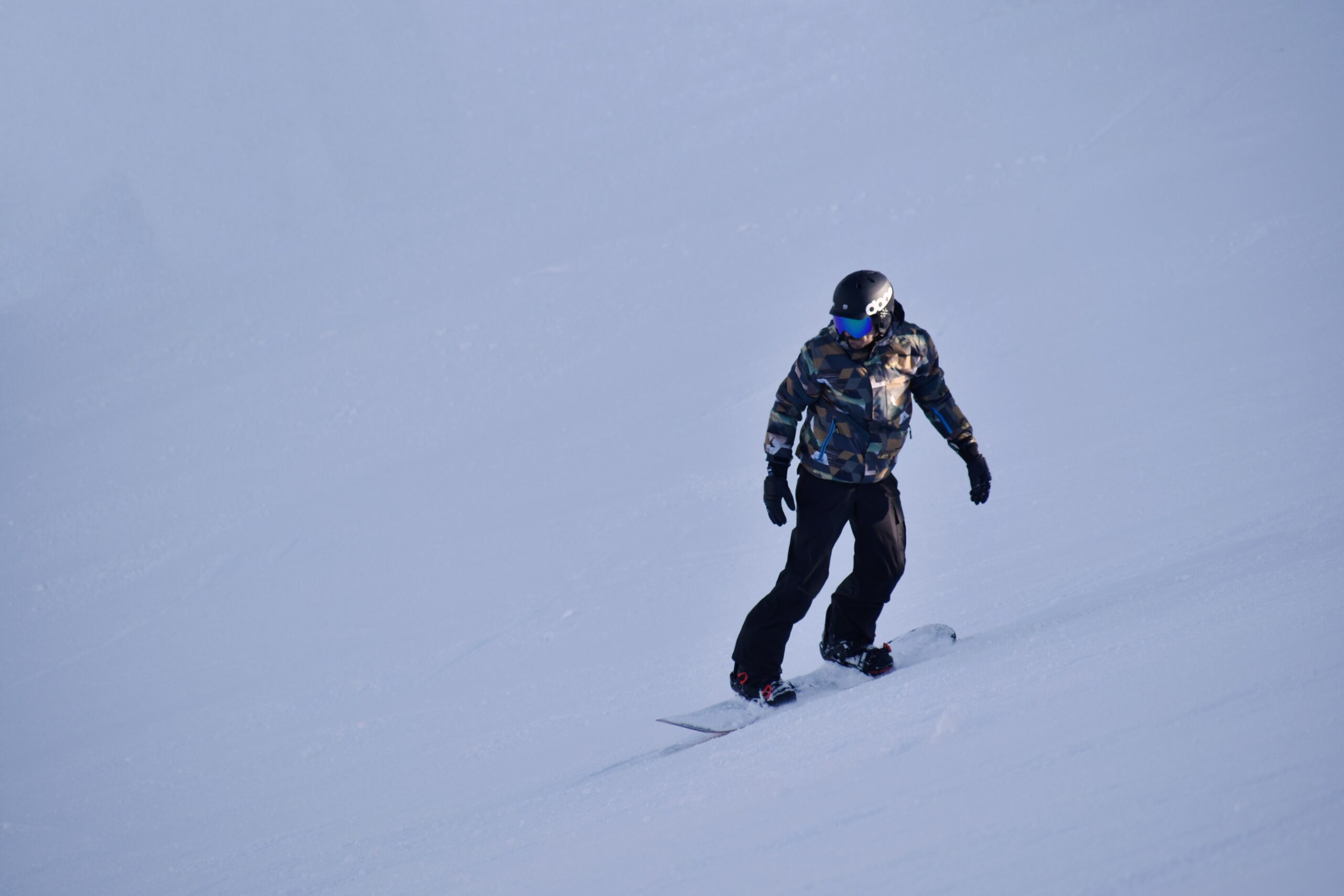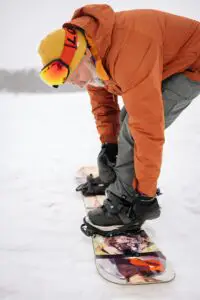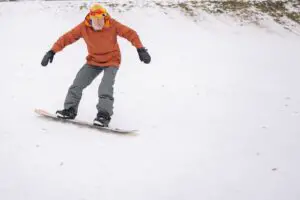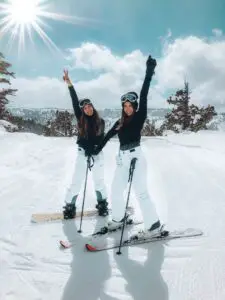Are you ready to witness the sheer joy and excitement on your toddler’s face as they glide down the slopes on a snowboard? Contrary to popular belief, toddlers can indeed snowboard!
In this article, we will explore age requirements, safety precautions, teaching techniques, and more to ensure that your little one has a fun and enjoyable experience on the snow.
Get ready to embark on an adventure together – one that will create lasting memories of belonging and pure delight.
Key Takeaways
- Ski resorts recommend starting snowboarding around age 4 or 5
- Wearing a helmet is crucial to protect developing brains
- Proper gear ensures safety and enjoyment on the slopes
- Toddlers can learn to snowboard with practice, encouragement, and guidance
Age Requirements for Toddlers in Snowboarding
You can’t let your toddler snowboard until they meet the age requirements. Snowboarding requires a certain level of physical development and coordination, which toddlers may not have yet.
According to research, most ski resorts recommend that children start snowboarding around the age of four or five years old. At this age, children have developed better balance and motor skills, allowing them to navigate the slopes more effectively. Additionally, their attention span is longer, enabling them to follow instructions and understand safety guidelines.
Safety Precautions for Toddlers Learning to Snowboard
When it comes to toddlers learning to snowboard, there are several important safety precautions to keep in mind.
First and foremost, wearing a helmet is of utmost importance to protect their developing brains from any potential injuries.
Additionally, close supervision by an adult who is experienced in snowboarding can help ensure the child’s safety and provide support as they learn this new skill.
Helmet Importance
Wearing a helmet is crucial for toddlers who want to snowboard. Snowboarding can be an exciting adventure, but safety should always come first. Research shows that wearing a helmet greatly reduces the risk of head injuries while snowboarding. Helmets provide protection by absorbing the impact if you fall or hit something hard. They help prevent serious injuries like concussions and skull fractures.
For toddlers, whose bodies are still developing, it’s even more important to wear a helmet. Their heads are proportionally larger compared to their body size, making them more vulnerable to head injuries. By wearing a properly fitted helmet, toddlers can enjoy their snowboarding experience while staying safe.
Supervision and Support
To ensure their safety, it’s important for parents or guardians to provide supervision and support while their little ones are on the slopes. Toddlers may be eager to try snowboarding, but they still need guidance and assistance. Here are some reasons why:
- Physical Support:
Toddlers have limited balance and coordination skills, so they rely on adults for stability. Holding their hands or using a harness can help them maintain control and prevent accidents. - Emotional Support:
Learning a new skill can be daunting for toddlers, especially in unfamiliar environments like the snowy slopes. Being there to cheer them on, reassure them, and celebrate their progress will boost their confidence.
Choosing the Right Snowboard Gear for Toddlers
Choosing the right snowboard gear for toddlers can be tricky, but it’s essential for their safety and enjoyment on the slopes. As a parent or caregiver, it’s important to ensure that your little one has the appropriate equipment to have a great time while staying safe.
When selecting snowboard gear for toddlers, there are a few key factors to consider. First, make sure that the snowboard is the right size for your child’s height and weight. This will ensure proper balance and control as they glide down the hill.
Additionally, invest in quality snowboard boots that fit well and provide good ankle support.
Finally, don’t forget about goggles and a helmet to protect their eyes and head during falls or collisions.
Teaching Techniques for Toddlers in Snowboarding
Now that you have the right snowboard gear for your toddler, it’s time to start teaching them how to snowboard! Don’t worry, with the right techniques and lots of patience, toddlers can definitely learn to snowboard.
Here are some teaching techniques that can help your little one get started:
- Balance and Coordination: Help your toddler develop balance and coordination skills by engaging in activities like walking on a balance beam or playing games that involve hopping and jumping.
- Activities: Walking on a line, practicing balancing on one foot
- Introduce Snowboarding Basics: Start by teaching your child the basics of snowboarding such as bending their knees, leaning forward or backward, and using their edges to control speed.
- Games: Play ‘follow the leader’ where you demonstrate different movements on the board for your child to imitate.
Remember to make learning fun and enjoyable for your toddler. With practice and encouragement, they’ll be shredding down the slopes in no time!
Building Confidence in Toddlers on the Snowboard
Building confidence on the snowboard can be achieved by praising your little one’s progress and providing a supportive environment. Toddlers are capable of learning to snowboard with the right guidance and encouragement. Research shows that positive reinforcement is key in building their self-assurance.
Celebrating their small achievements, such as successfully making turns or standing up on the board, will boost their confidence and motivate them to keep trying. Creating a supportive environment where they feel safe to take risks is also crucial. Offering words of encouragement, like ‘You’re doing great!’ or ‘I believe in you,’ helps foster a sense of belonging and empowers them to overcome challenges.
Common Challenges Faced by Toddlers in Snowboarding
One of the common challenges faced by young children on the slopes is getting their balance right. As a toddler learning to snowboard, it can be tricky to find your center of gravity and stay upright. But don’t worry, you’re not alone! Many kids your age face this challenge too.
Here are some tips to help you improve your balance:
- Practice standing on one foot while holding onto a railing or an adult’s hand.
- Try walking in a straight line with your arms out for balance.
- Imagine you’re walking on a tightrope like a circus performer!
- Take small steps and focus on keeping your body centered.
Tips for Making Snowboarding Fun and Enjoyable for Toddlers
To make snowboarding more fun and enjoyable for you, try playing games on the slopes. Games like follow the leader or racing your friends not only add an element of excitement to your snowboarding experience but also help improve your skills.
Following the leader allows you to learn from others and challenge yourself to try new tricks and techniques. It’s a great way to push your limits and see what you’re capable of. Plus, it’s always fun to watch others and see what they come up with!
Racing against your friends creates a friendly competition that motivates you to push harder and strive for improvement. It’s a great way to challenge yourself and see how you stack up against others. Plus, it’s a blast to see who can make it down the mountain the fastest!
Additionally, participating in these games gives you a sense of belonging within the snowboarding community. As you bond with fellow riders who share similar interests, you’ll feel a part of something bigger. It’s a great way to make new friends and connect with others who love snowboarding as much as you do.
Frequently Asked Questions
Are There Any Specific Snowboarding Gear Recommendations for Toddlers With Disabilities?
When it comes to snowboarding gear for toddlers with disabilities, there are some specific recommendations. It’s important to find gear that is adjustable and supportive, ensuring safety and comfort on the slopes.
How Long Does It Typically Take for a Toddler to Become Proficient in Snowboarding?
It typically takes toddlers a varying amount of time to become proficient in snowboarding. Every child is unique and progresses at their own pace. With practice, patience, and supportive instruction, your toddler can develop their skills on the slopes.
What Are Some Signs That Indicate a Toddler May Not Be Ready for Snowboarding Yet?
Not all toddlers may be ready for snowboarding yet. Signs that indicate they may not be ready include lack of balance, coordination, or ability to follow instructions. Each child develops at their own pace.
Are There Any Age Restrictions for Toddlers to Participate in Snowboarding Competitions?
There are age restrictions for toddlers to participate in snowboarding competitions. It’s important to prioritize their safety and development, so it’s best to wait until they are older and more physically capable.
How Can Parents Help Their Toddlers Overcome Fear or Anxiety While Learning to Snowboard?
To help your toddler overcome fear or anxiety while learning to snowboard, start by creating a supportive and positive environment. Encourage small steps, provide gentle guidance, and celebrate their progress. With patience and love, they can conquer any slope!
Conclusion
Congratulations on reaching the end of this informative and research-based article about toddlers and snowboarding!
By now, you should have a good understanding of the age requirements, safety precautions, gear selection, teaching techniques, confidence-building strategies, common challenges, and tips for making snowboarding enjoyable for your little one.
Remember, with proper guidance and support, even toddlers can conquer the slopes like pros!
So go ahead and hit those powdery mountains with your pint-sized shredder. Just be prepared for their incredible ability to turn any slope into a winter wonderland adventure!





